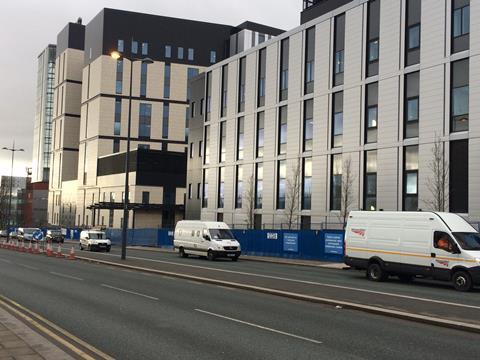Business case to complete mothballed scheme will be finalised next month
The NHS trust responsible for the Liverpool hospital left in the lurch when Carillion collapsed last year has revealed that more defects have been found as it prepares to put its final financial plan to complete the scheme to the government for approval.
The Royal Liverpool and Broadgreen University Hospitals NHS trust said the scope of works required to get the hospital up and running has increased again.
Papers published ahead of yesterday's meeting of the trust’s board raised both latent defects and an increase in the scope of works as red-rated risks.
It said: "Various survey reports have identified further defects that need to be factored into the costs to complete."
The trust said it was working closely with both new main contractor Laing O'Rourke and project manager Gleeds ahead of publishing its business case next month.
The trust's interim chief executive Peter Williams said: "A detailed programme of work to fix the structural issues in the New Royal has been finalised. These works are complex due to the advanced nature of the building and will take time to complete.
"They involve strengthening existing beams and reducing the loads that are causing structural issues. These works will ensure the building is finished to the standards required so we can deliver the world class hospital we’ve all been waiting for."
He also said that £3m had been spent on essential maintenance costs on the half-built hospital in the six months from July to December last year.
Williams said: "This included flushing the water system to provide power and heating in order to ensure future safety and maintenance of systems, fixtures and finishes.
"While these costs are significant, the cost of replacing degraded systems could be far higher and funding is in place for this ongoing essential maintenance."
Problems with the work at the part of the hospital that has already been built were first revealed shortly after Carillion collapsed, when the contractor's former chief executive Richard Howson revealed there were cracks in a number of structural beams.
Since then an Arup survey said the cladding that had been fitted was non-compliant while the ventilation system in the anaesthetic rooms in theatres needed to be fixed.
While not revealing details of the latest defects, the trust said they would be factored into the final business case which will be finished next month.
Williams said: "Once we have the final programme from Laing O’Rourke, we can finalise our business case. This is to be considered at Trust Board [meeting next month] before going to NHS Improvement/England and the [Department for Health] for final approval."




























No comments yet